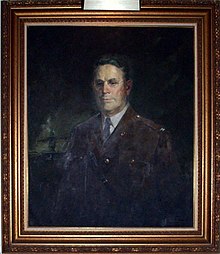William R. Blair
| William R. Blair | |
|---|---|
 |
|
| Born |
November 7, 1874 County Londonderry, Ireland |
| Died | September 2, 1962 (aged 89) Fair Haven, New Jersey |
| Residence | United States |
| Citizenship | American |
| Alma mater | |
| Scientific career | |
| Fields | Radar |
| Institutions | |
| Thesis | The change of phase due to the passage of electric waves through thin plates and the index of refraction of water for such waves, with applications to the optics of thin films and prisms ... (1908) |
| Doctoral advisor | Robert Andrews Millikan |
| Military career | |
| Allegiance |
|
| Service/branch |
|
| Years of service | 1917–1938 |
| Rank |
|
William Richards Blair (November 7, 1874 – September 2, 1962) was an American scientist and U.S. Army officer, who worked on the development of the radar in United States starting during the 1930s. He led the U.S. Army's Signal Corps Laboratories during its formative years and is often called the "Father of American Radar".
Blair was born in Ireland in County Londonderry on November 7, 1874, and brought to the United States by his parents when he was 9 years old. He was awarded a Ph.D. in physics in 1906 from the University of Chicago. His doctoral dissertation involved experimental studies of microwave reflections, including those from non-metallic surfaces. After graduation, he took a position with the U.S. Weather Bureau as a specialist in atmospheric sciences. There he prepared a major report, “Meteorology and Aeronautics,” for the NACA (National Advisory Committee for Aeronautics, predecessor of NASA) that was widely circulated as a basic handbook. The theoretical portions of the report were published in a research journal.
When World War I began, Robert A. Millikan recommended Blair to be commissioned as a Major in the Aviation Section of the Army Signal Corps Reserves.
Blair was made the Chief Meteorologist for the American Expeditionary Force and sailed to France in September 1917. Upon arrival Blair met with the British and French military weather services and established the exchange of weather information between the three. Blair established his headquarters at the Colombey-les-Belles Aerodrome and prepared the way for the over 300 officers and men who served as meteorological troops overseas.
...
Wikipedia
